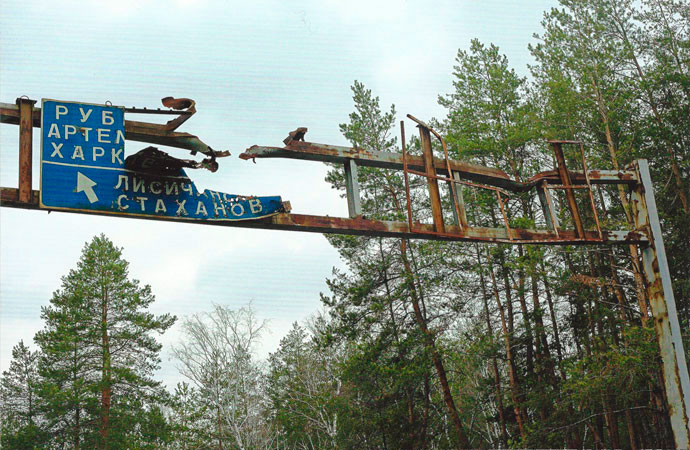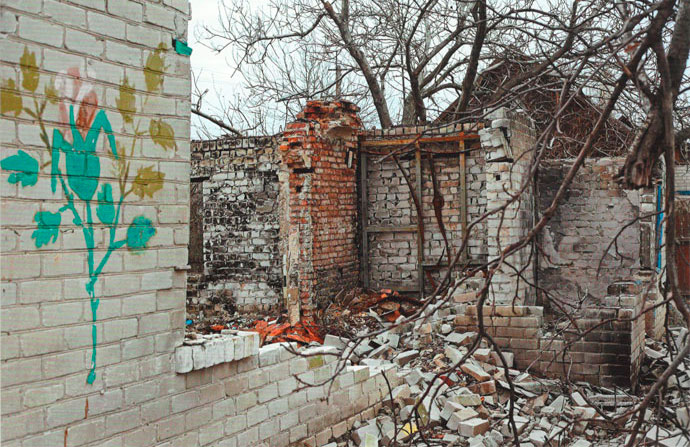zandpoortvest 10
be 2800 mechelen
t +32 15 336 336
m (b) +32 478 811 441
m (d) +32 475 477 478
Difficulties of Profanation
Ukrainian Pavillion @ Venice Biennial 2015
A traditional showcase, in its form and material referring to showcases from the Soviet Union, accumulates materials that Nikita Kadan has collected in eastern Ukraine during the war. The rubble inside reveals political narratives with a striking truthfulness: these destroyed artefacts are containers of words, of images and memories that narrate a (present) history. Thus the sculpture deals with the institutionalization of memories, the role of local heritage in forming a historical understanding against the cultural amnesia resulting from the conflicts. The showcase itself, in opposition to the rubble it collects, addresses Ukraine’s Soviet past, a part of history that is rather readily forgotten. It places the current conflict in a historical framework and presents the war as an extension of an established conflict of ideologies.
In between the rubble, inside the showcase, grows a bean plant that over time will cover the destroyed artefacts. It transforms the sculpture into a greenhouse, referring to popular gardens that appeared throughout the conflict, starting on the occupation of Maidan Square and continuing to the warzone in Dombass. These gardens suggest hope, a new start, a future life and process of reconciliation.
“The allegorical character of Hope is traditionally called upon by shipwreck victims, those who are completely at the mercy of external forces. It is easy to make profound generalizations about it for those who are safe on the shore. And it is impossible to describe his situation to the one who is being played by the waves. The experience of a pure, all-encompassing hope, which has replaced everything else, must remain untold. It often appears as an aid, an excuse for leaving loopholes, for thoughtlessness and for not pursuing a matter. We should talk about hope only if we need to exhaust it, to step over it as if it was a threshold, to be on the other side of it. Only then we can calmly walk on the burning ground, smiling and taking full responsibility for our choices.” [Nikita Kadan]
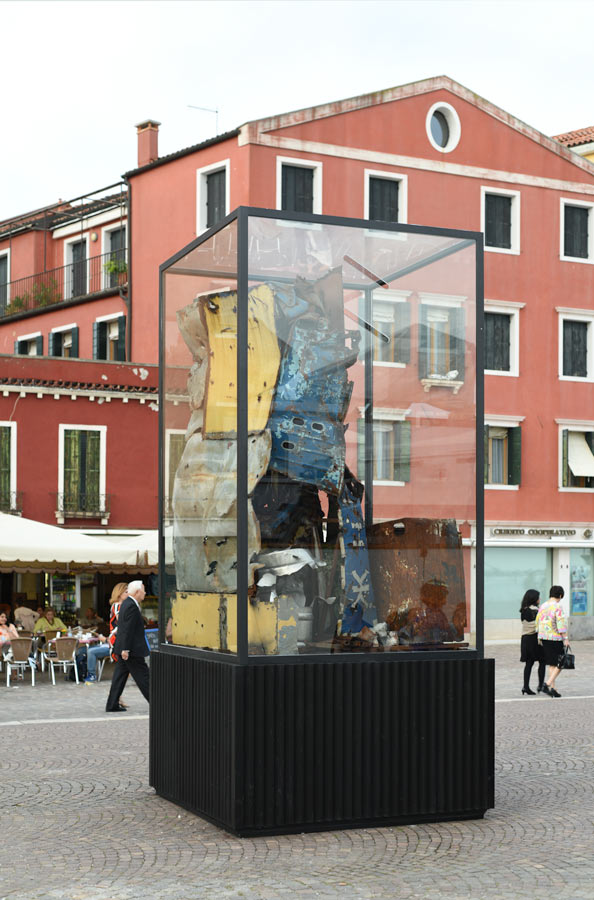
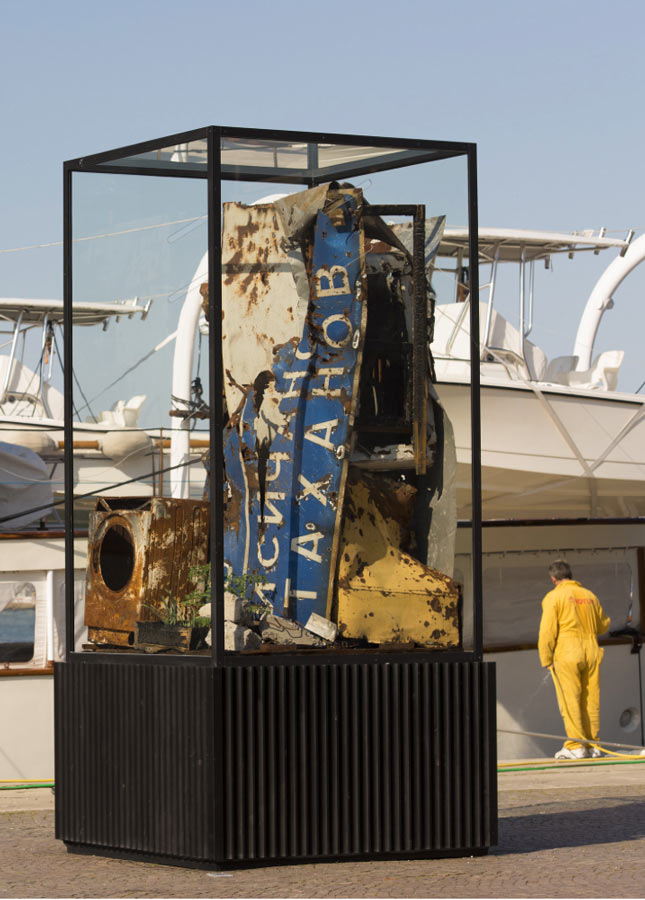
Year of realization: 2015
Technique: Marble, steel, glass, earth, bean plant, glass and wood
Size: 160 x 160 x 370 cm
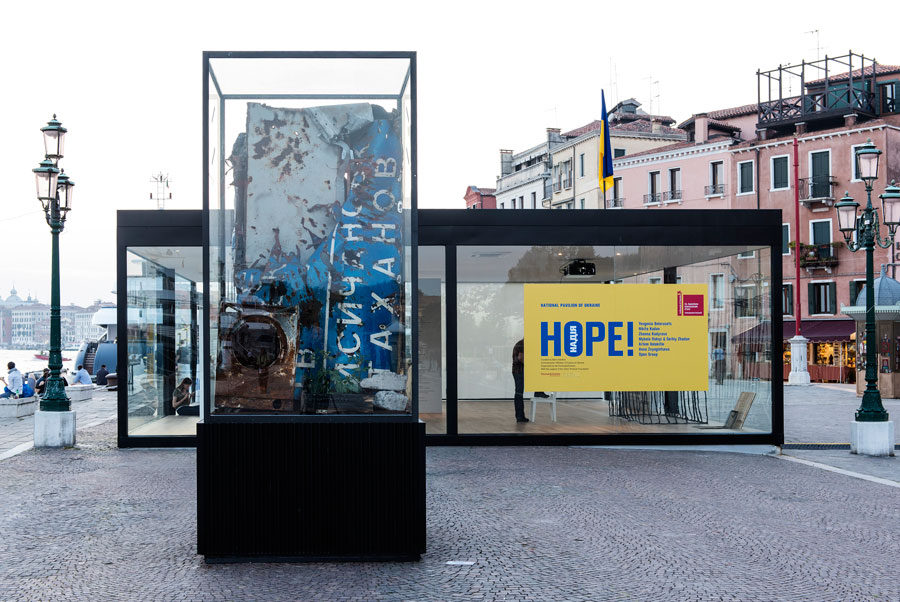
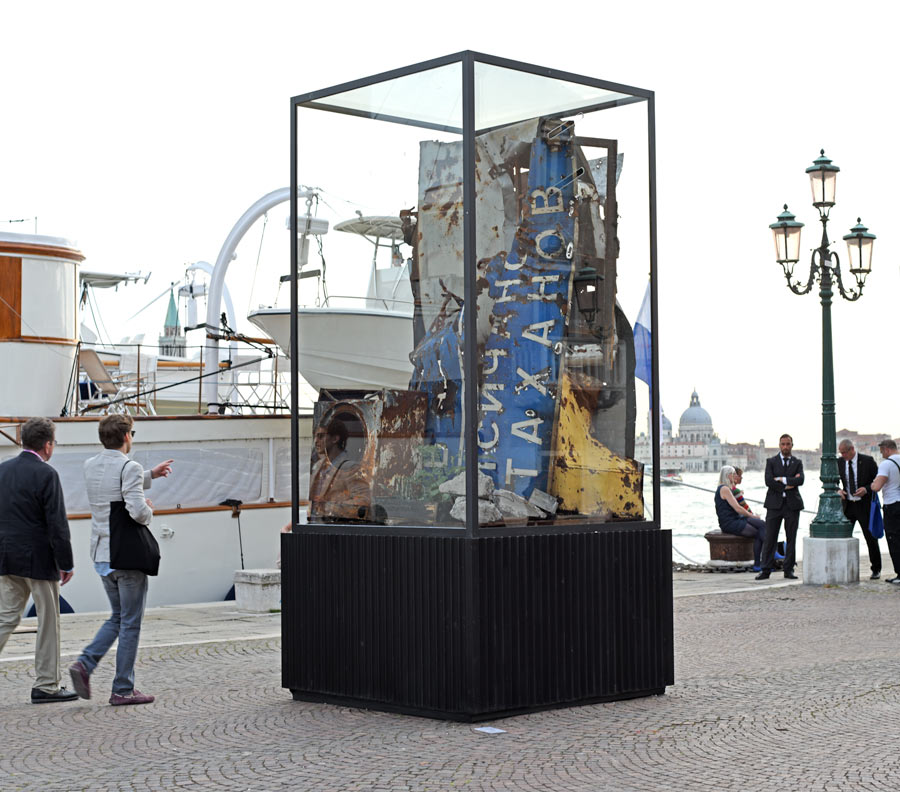
Photos taken by Nikita Kadan in East-Ukraine:
